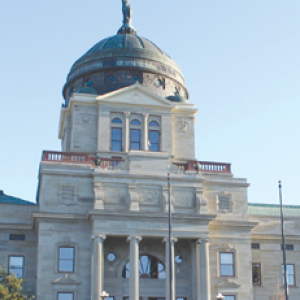Montana’s counties are taking a proactive stance on property tax concerns by formally requesting clarity and accountability from the Montana Department of Revenue (DOR). In letters addressed to the Department, Beaverhead, Carbon, Carter, Custer, Lincoln, Missoula, Park, and Ravalli counties have asked that DOR provide the calculation limiting the State’s 95 statewide mills, as well as identification of who is responsible for authorizing property tax increases beyond the statutory limitations.
The recent communication with DOR comes on the heels of an unanswered request from Beaverhead County to Montana’s Attorney General, Austin Knudsen, seeking an opinion on the interpretation of laws related to the calculation of the statewide mills, which significantly impact property tax bills for constituents throughout Montana. According to the request, the State of Montana has consistently levied 95 mills annually, despite a provision in Montana law (Montana Code Annotated 15-10-420) that requires a reduction in levying authority when taxable values increase.
This move by the counties underscores their commitment to transparency and responsible fiscal management, emphasizing the importance of local government control in property tax levies. Montana’s counties seek to ensure that property tax increases are justified, understood, and in line with the needs and expectations of Montana’s residents.
To help show that counties are holding property taxes in line while the State increases them, the Montana Association of Counties (MACo) calculated property tax changes for Governor Gianforte’s private mansion in Helena.
“Surprisingly, his taxes will DECREASE year over year because his appraised value only increased 7.59%,” stated Mineral County Commissioner Roman Zylawy. “The limitations on local government result in a decreased tax burden for his home, with the exception of the State levies which haven’t followed the statutory limitations that cities and counties must follow.”
According to MACo’s calculations, the total property tax for the Governor’s Helena home in 2022 was $7,837.15; whereas in 2023, it is projected to be $7,407.55, which is a decrease of $429.60. Overall, Governor Gianforte’s taxes went down, but his state property taxes increased 8%. The City of Helena taxes went down 4%; Lewis & Clark County went down 11%; local school levies down 4%; and county voted levies down 13%.
“We think this is a perfect example highlighting the need for consistency, transparency, and fairness in property tax calculations,” said Beaverhead County Commissioner Mike McGinley. “It clearly shows that the reduction is due to local governments adhering to our statutory mill levy limitations, and the sole increase in his property taxes exists in only those mills collected by the State, which are within the control of the Governor’s Office.”
“Montana counties are committed to addressing property tax concerns promptly, reiterating their dedication to responsible spending, essential services provision, and keeping property taxes as low as possible for their residents,” stated Fergus County Commissioner Ross Butcher. “They are calling on the state to follow their lead in maintaining transparency and fiscal responsibility in property tax calculations.”
Underscoring the fiscal responsibility of counties, Custer County Commissioner Jason Strouf said, “Over the years, Custer County has provided cost-of-living wage increases for our valued employees. We have built infrastructure utilizing existing revenue. We have only one voter-approved general obligation bond which was to build a new detention center that holds both the State and the County inmates. This year, again, our mills are decreasing, and we have balanced our budget while following the requirements of MCA 15-10-420.”
Liberty County Commissioner Joette Woods agrees, stating, “Liberty County believes in transparency at all levels of government. Our county has seen minimal taxable increases and high inflation rates. Yet, we rise to the challenge and continue to be fiscally responsible with no new money.”
“At the end of the day, we, as counties, are committed to following the law,” said McGinley. “We are simply asking the State and the Governor’s Office to do the same and to do what is right for the people of Montana.”

